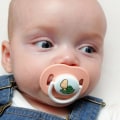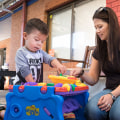Diagnosing autism spectrum disorder (ASD) can be a challenge, as there is no medical test, such as a blood test, to confirm the diagnosis. However, doctors can analyze a child's developmental history and behavior to make an accurate diagnosis. In some cases, ASD can be detected as early as 18 months of age or younger. Early detection and treatment of autism spectrum disorders (ASD) can have a significant impact on the lives of affected children and their families.
At 12 to 13 months of age, the “diagnostic stability of the diagnosis of autism” is approximately 50%. This rises to 80% at 14 months and 83% at 16 months. This makes sense when considering the development of a young child. At 12 months, they should be beginning to say words, respond to commands, and interact with others.
By 18 months, these skills should be well established, so any child who does not demonstrate them should raise alarm bells. Signs that may indicate autism include lack of eye contact or little to no response to parents' smiles or other facial expressions. If you suspect your child may have ASD, it is important to visit an evidence-based autism treatment center that can help you and your child build a better life together. The American Academy of Pediatrics recommends universal screening for autism around age two.
However, many children are not diagnosed until they are older than three. It is important to remember that while there is no cure for autism spectrum disorder, early detection and treatment can help reconfigure the brain and reverse symptoms.





Leave a Comment